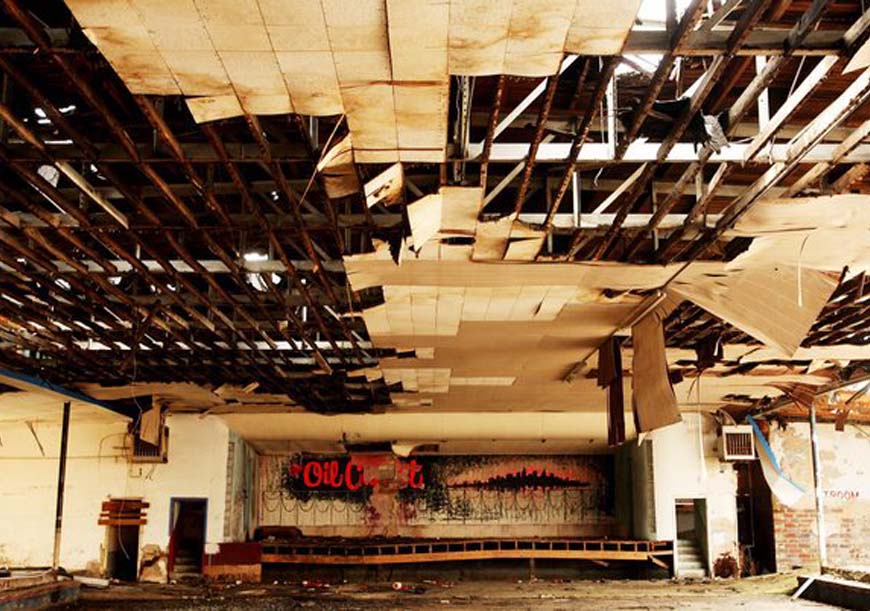The Community Revitalization Center™️
The Historic Big 10 Ballroom, located at 1624 E. Apache in Tulsa, Okla, is a very large open structure originally built in an Art Deco Streamline style in 1948 by Lonny Williams. Mr Williams was only the second black officer on the Tulsa police force. It was created to be a venue for black entertainers to perform in North Tulsa.
In its day the Big 10 Ballroom was the venue for some of the hottest music of the day. It was a stop on the what was known as the “Chitlin Circuit” that provided safe venues for black singers and musicians to perform as they toured across the United States. A venue where crowds once packed the house to watch legendary performances from artists that are now part of the canon of American music.
Some of the artists to perform at the Big 10 during the 50′ and 60s were Ella Fitzgerald, Ray Charles, James Brown and Wilson Pickett, Little Richard, B.B. King, Fats Domino, Count Basie, Jackie Wilson, Dinah Washington, Bobby “Blue” Bland, Sam and Dave, Ike and Tina Turner, and the Temptations. All good things come to an end, and it closed in the mid-196os.
Plans to Restore
Lester Shaw, founder and executive director for the nonprofit A Pocket Full of Hope, said the organization is dedicated to introducing the arts as a character-builder into the lives of Tulsa youth. The Big 10 Ballroom Auditorium, as it will be called, will be the venue for the organization’s theater productions and other events meant to lift the north Tulsa community surrounding it.
Shaw said the organization will apply for a grant from the U.S. Department of Housing and Urban Development and seek help from charitable foundations to cover the restoration, which will begin with closing the massive holes in the roof that once served as a secondary dance floor. Then work will be done to clean the interior, extend the stage, add exits, create a coffee shop area and construct a corner to house photos and other memorabilia of the ballroom’s and neighborhood’s past. (from NewsOn6.com)
Renovation made possible by the following sponsors:
- Oklahoma State Department of Tourism
- American Heritage Bank
- Maxine & Jack Zarrow Foundation
- Anne & Henry Zarrow Foundation
- George Kaiser Family Foundation
- Oklahoma Arts Council
A Pocket Full Of Hope, it’s participants and the Tulsa community would like to say, “Thank you,” to our donors for their generous support.
#
The Community Revitalization Center and Educational Research Institute in Tulsa, Okla. is taking over its facility, formerly known as the Historic Big Ten Ballroom, in a big way with goals to restore and revitalize an important piece of history. A Pocket Full Of Hope, Inc’s executive director, Dr. Lester Shaw, has goals for the CRC/Educational Research Institute.
A Pocket Full of Hope, Inc.’s Community Revitalization Center and Educational Research Institute ( Formally the Historic Big 10 Ballroom)
2 What is the Community Revitalization Center and Educational Research Institute? Former home of the Big 10 Ballroom, a major music venue in the City of Tulsa in the early 1950’s and 60’s. Located in a centralized location Restoration of the building is well under way and it is set to open in the Spring of 2016 Will create Jobs, Personal Development, Academic Assistance, Entertainment and a Museum of African American History. Restoration will facilitate an entire revitalization movement that will benefit the citizens of Tulsa and Oklahoma. An opportunity to increase access to services provided to the citizens of Tulsa
3 What are the Goals of the CRC/Educational Research Institute? Increase the amount of social services available to the immediate area as well as the entire City of Tulsa Provide an accessible venue that is safe and will be available for the entire community Engage in research with local educators to enhance their development within the education system Give a historic account of the Big 10 Ballroom as well as the contributions made by African-Americans in the Tulsa and Oklahoma areas Increase Cultural Tourism
4 Cultural Tourism is the subset of tourism concerned with a country or region’s culture, specifically the lifestyle of the people in those geographical areas, the history of those people, their art, architecture, religion(s), and other elements that helped shape their way of life.
5 Funding Goals Our initial fundraising goal was $568,000 to restore the building. That goal has been met with the help of the Anne and Henry Zarrow Foundation, the Mary K. Chapman Foundation, the Mabee Foundation, the Tandy Foundation, the Gelvin Foundation, the George Kaiser Family Foundation and many corporate and private donors.
Questions and Answers For further information, please contact: Dr. Lester Shaw 1325 East Apache Tulsa, Oklahoma
Credit: Meredith West @ http://slideplayer.com/slide/6959491/


